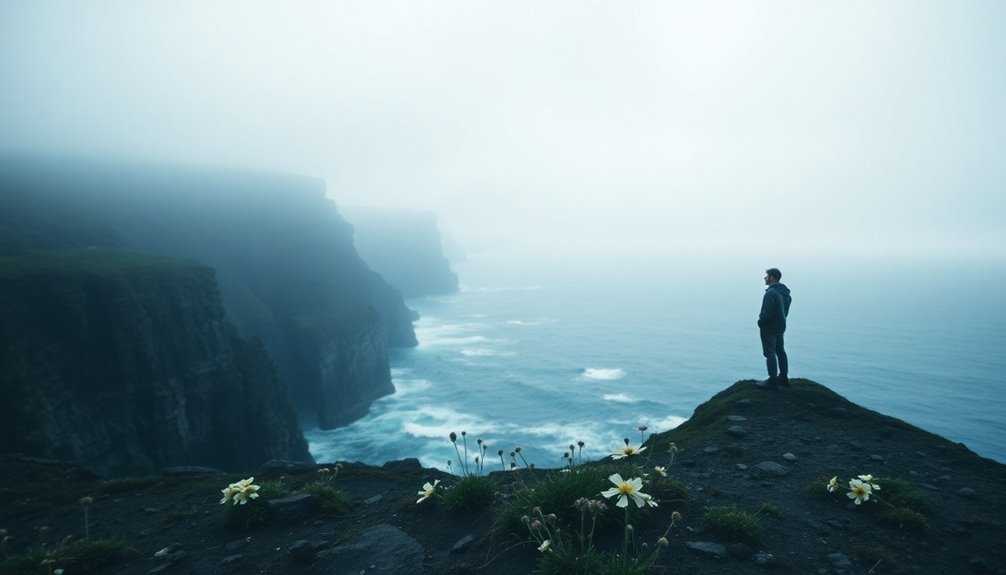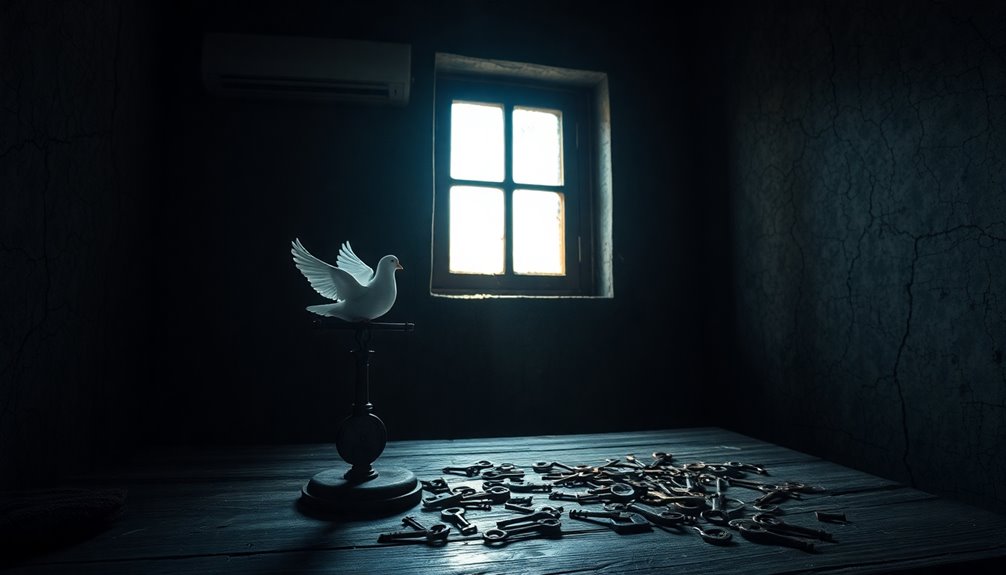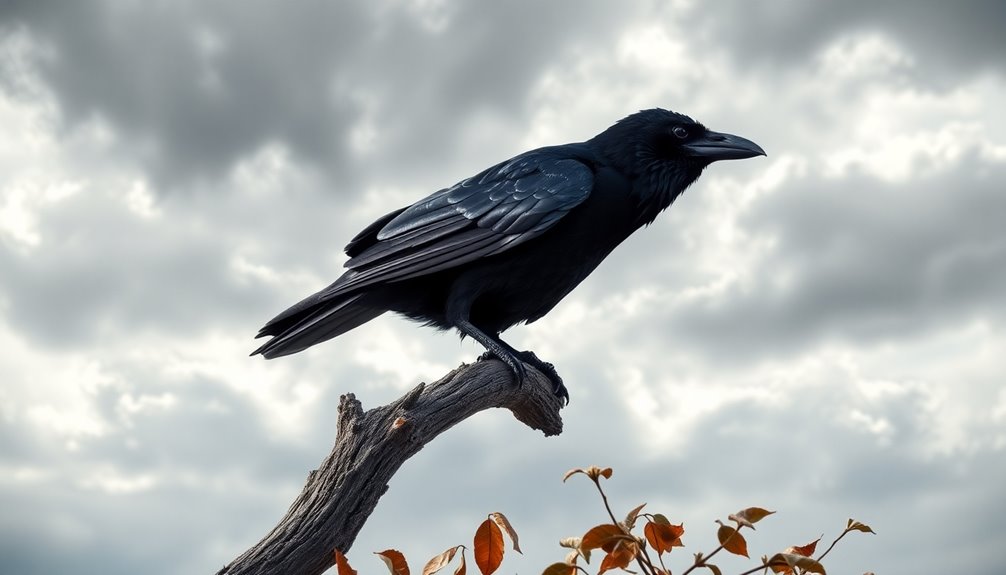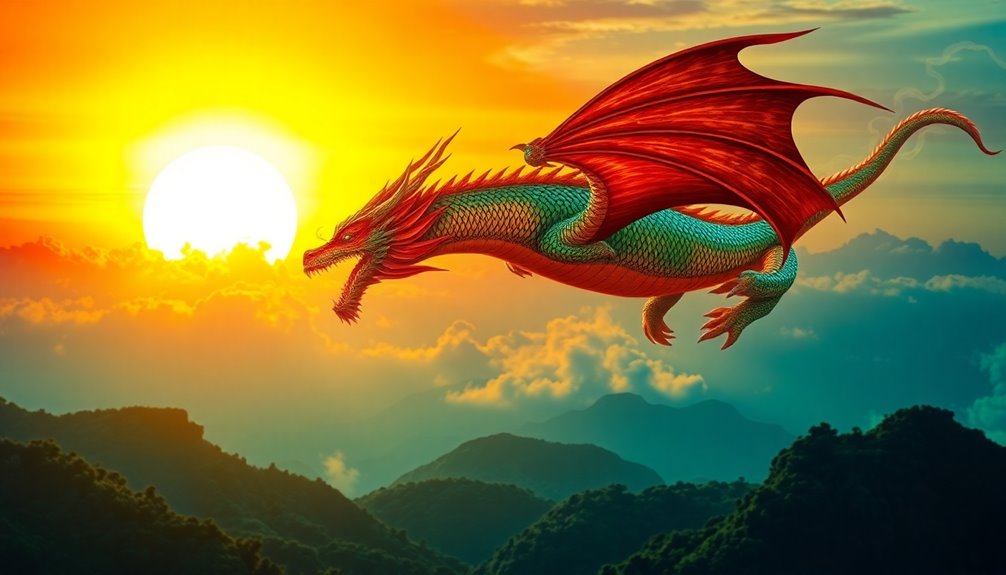Blue symbolizes many wonderful things! It represents calmness and helps you relax, making it a favorite choice for bedrooms. This color also shows trust and reliability, which is why many brands use it. In different cultures, blue means various things, like wisdom in India and good luck in Latin America. Spiritually, it promotes communication and inner peace. Plus, artists often use blue to express deep feelings. Surrounding yourself with blue can create a peaceful vibe, sparking creativity and focus. There's so much more to discover about blue's magic, so stick around to learn even more amazing facts!
Key Takeaways
- Blue symbolizes tranquility and serenity, promoting relaxation and calmness in psychological well-being.
- In various cultures, blue represents trust, reliability, and divine purity, enhancing feelings of safety.
- Historically, blue has been associated with spirituality and protection, valued in art and jewelry.
- In branding, blue conveys professionalism and boosts brand recognition, enhancing customer loyalty.
- The color blue is linked to communication and self-expression, aiding emotional regulation and clear conversations.
Common Associations of Blue
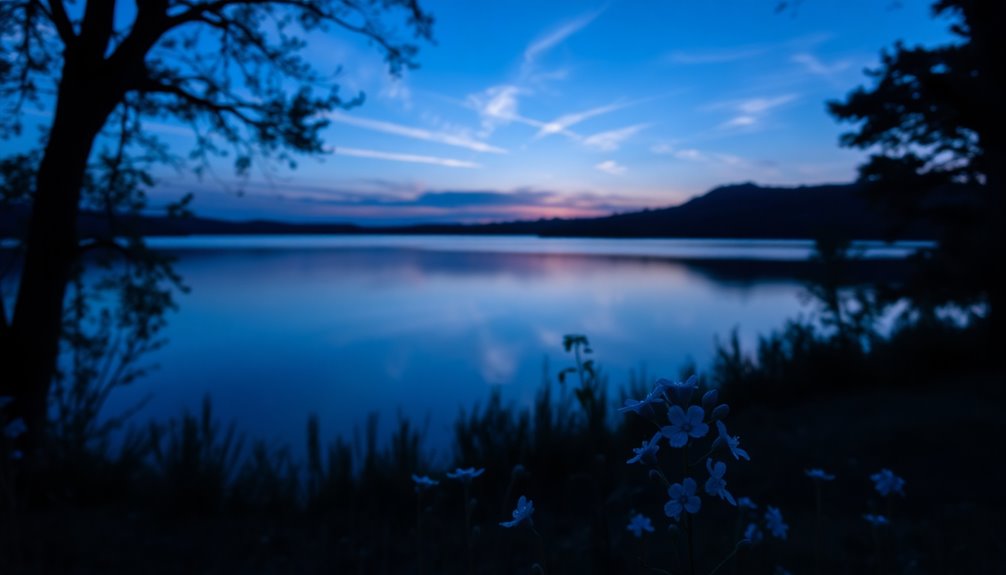
When you think of the color blue, you might immediately associate it with feelings of tranquility and serenity. Blue is often seen as a calming color, helping you feel relaxed and at peace. That's why many people choose blue for their bedrooms or favorite places to unwind.
But blue isn't just about calmness; it also represents trustworthiness. Companies often use blue in their logos and uniforms because it shows honesty and loyalty. This makes you feel more secure when you see it.
Blue also stands for stability. It gives a sense of order, which many businesses want to convey to their customers. Plus, did you know that blue can spark creativity? Studies show that being in a blue space can help your imagination flow, making it easier to come up with bright ideas.
In different cultures, blue carries unique meanings too. In China, it symbolizes immortality, while in Judaism, it signifies redemption.
Psychological Effects of Blue
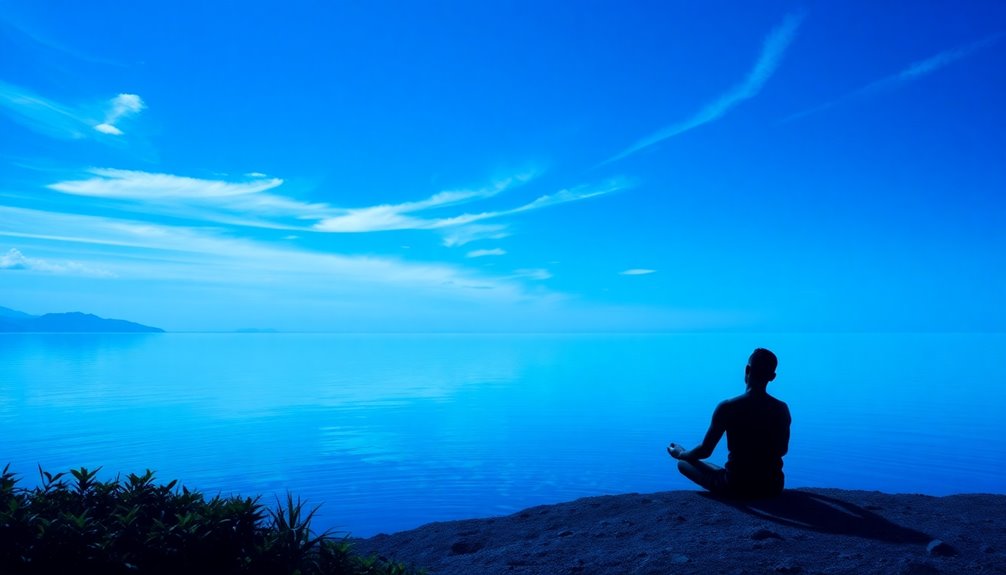
The color blue considerably impacts your psychological well-being, often promoting calmness and relaxation. Its calming effects can help you feel more at ease, creating a sense of tranquility in your life.
Here are three wonderful ways blue can enhance your mood:
- Stress Reduction: Surrounding yourself with blue can lower your blood pressure and reduce stress, making it easier to unwind after a busy day.
- Feelings of Trust: Blue evokes feelings of trust and reliability, which is why you often see it in corporate branding and uniforms. It makes you feel safe!
- Boosting Creativity and Productivity: Exposure to blue light can enhance your focus, helping you concentrate better while working. It also opens your mind to new ideas, sparking creativity.
Psychological research shows that blue can aid in emotional regulation, allowing you to manage feelings of anxiety and overwhelm.
When you embrace blue, you invite a sense of calmness and improved emotional balance into your life.
Cultural Significance of Blue

When you think about the color blue, it's amazing how much it means in different cultures around the world!
From being a symbol of wisdom in India to representing hope in Latin America, blue connects people in unique ways.
Let's explore these fascinating meanings and see how blue shapes our feelings and traditions!
Global Color Associations
Across various cultures, blue carries rich symbolism and distinct meanings that reflect unique values and beliefs. This vibrant color brings people together with its powerful associations. Here are three key examples of what blue symbolizes around the world:
- China: Blue is linked to immortality and renewal, connected to spring and the east. It represents life and fresh beginnings.
- Judaism: Blue is a spiritual color, symbolizing redemption and divine purity. You can see this in the blue threads of the tzitzit, worn by Jewish men.
- India: Blue represents wisdom and knowledge. The Hindu god Krishna, who embodies love and compassion, is often depicted in blue.
In Latin America, blue brings good luck and hope during celebrations. Meanwhile, in the United States, blue is associated with trustworthiness and clarity. Companies often use it in their branding to convey reliability.
These global color associations highlight how blue symbolizes peace and tranquility across diverse cultures, creating a beautiful tapestry of meaning. So, the next time you see blue, remember the wonderful stories it tells around the world!
#
Spiritual and Emotional Connections
Blue evokes deep spiritual and emotional connections that transcend cultural boundaries. This beautiful color is often linked to feelings of peace and tranquility. In color psychology, blue promotes calming effects that help you feel relaxed and balanced.
Many spiritual belief systems connect blue to the throat chakra, which governs communication and self-expression. When your throat chakra is balanced, it encourages clarity in expressing your thoughts and feelings.
In India, blue is a revered color, representing Krishna and symbolizing truth, love, and the divine. This shows just how deeply rooted blue is in culture and spirituality.
In Western cultures, you might hear about "something blue" during weddings. This tradition represents love and fidelity, highlighting blue's connection to happiness in marriage.
Using blue in meditation practices can enhance your emotional balance, helping you find inner peace. It's amazing how blue can bring joy and connection to our lives.
Whether you're seeking calmness or expressing love, blue plays a significant role. So, next time you see blue, remember its power to connect us spiritually and emotionally!
Historical Context and Uses
Throughout history, the color blue has held significant cultural importance, enchanting societies with its rich symbolism and diverse meanings. Blue has been historically significant, starting with the creation of Egyptian Blue around 2,200 B.C. This beautiful pigment was used in art and decoration.
Imagine:
- Lapis Lazuli, a stunning blue stone, prized for its deep hue in ancient jewelry.
- In China, blue symbolizes immortality, a connection to the everlasting.
- In India, blue is linked to Krishna, embodying truth and eternity.
In many cultures, blue holds different meanings. It's often linked to spirituality and protection. For example, in Judaism, it signifies redemption, while in ancient Egypt, it represents creation and rebirth.
Fast forward to today, blue's historical roots shine bright in modern branding. Companies use it in corporate logos and uniforms because it conveys trust and reliability. Just think about the many brands you see! They choose blue to make you feel safe and confident.
## Spiritual and Emotional Connections
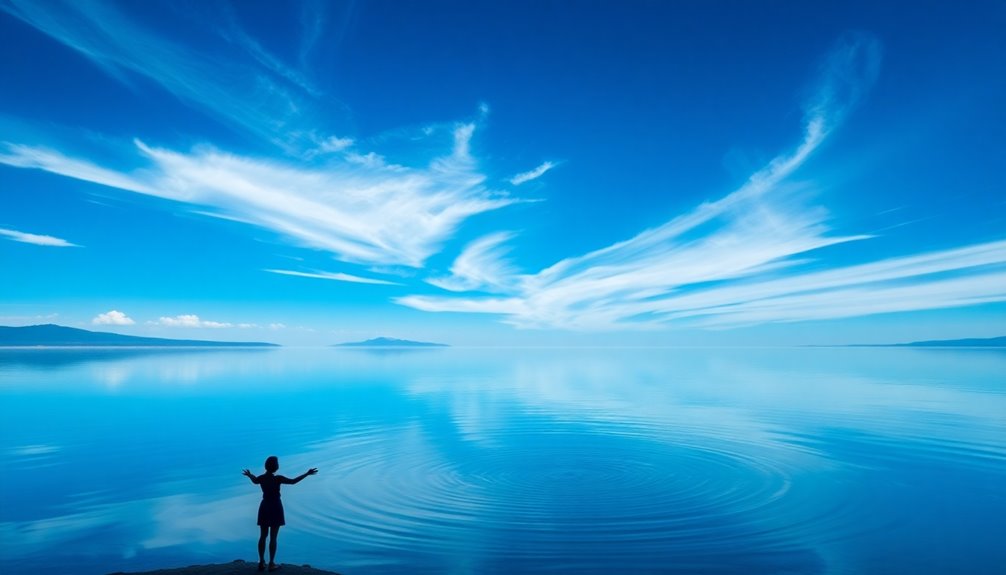
Blue isn't just a pretty color; it holds special meanings that connect us to our feelings and the world around us!
It can bring a sense of calm and balance, helping you feel peaceful inside.
Plus, blue is linked to communication, making it easier for you to express your thoughts and connect with others on a deeper level.
Spiritual Protection and Purity
The color blue embodies profound spiritual protection and purity, resonating deeply with many cultures around the world. You might notice how blue is often linked to safety and peace. It's believed to ward off negative energies and bad spirits, creating a comforting environment for everyone.
Here are three ways blue promotes spiritual protection and purity:
- Throat Chakra: Blue represents the throat chakra, which helps with communication. When this chakra is balanced, you express your thoughts clearly and truthfully.
- Divine Connection: Blue symbolizes trust and loyalty in spiritual relationships. It creates bonds that feel safe and supportive, making you feel more connected to others.
- Protective Symbols: Many cultures use blue in amulets and symbols, reinforcing its role in safeguarding individuals from harm and promoting spiritual well-being.
Emotional Calmness and Balance
Colors can considerably influence your emotional state, and blue stands out for its ability to foster calmness and balance. When you see blue, you might feel a sense of tranquility wash over you. This beautiful color can help reduce your stress levels and ease anxiety.
Imagine sitting in a room painted light blue; you may notice your heart rate slowing down, leading to a feeling of overall well-being.
Blue is linked to the throat chakra, which plays a big role in your communication. When you're in a blue space, it encourages mental balance, making it easier for you to express your thoughts and feelings clearly. Many cultures even see blue as a protective color. They believe it shields you from negative energies, helping you find that inner peace you crave.
Studies show that people who spend time in blue environments often report feeling calmer and more creative.
Communication and Expression Enhancement
When you're surrounded by blue, it not only calms your mind but also enhances your ability to communicate and express yourself. The color blue represents clarity and honesty, often associated with the throat chakra, which governs communication and self-expression. This means when you soak in blue, you might find it easier to share your thoughts and feelings.
Here are three magical ways blue helps with communication:
- Feelings of Tranquility: Blue creates a peaceful atmosphere, making it easier for you to open up and engage in honest conversations.
- Emotional Regulation: The calming effect of blue allows you to manage your emotions better, letting you express yourself clearly and thoughtfully.
- Artistic Expression: Many artists use blue to convey deep feelings, helping them explore complex emotions in their work.
Moreover, blue is often seen as a protective color, wrapping you in a sense of safety. This encourages you to share your innermost thoughts without fear.
Color Combinations With Blue

Harmonious color combinations with blue can transform a space or design, infusing it with energy and emotion. Blue is often used together with warm colors like orange and yellow. This combination creates vibrant designs that draw attention and evoke feelings of excitement. Imagine how a room pops with these colors!
You can also mix shades of blue with white or pastels for a calming effect. This combination is perfect for open spaces like wellness centers or healthcare settings. It makes everything feel serene and relaxed.
If you're looking for something more sophisticated, dark blue pairs beautifully with neutral shades like gray and beige. This combo promotes a professional look, great for corporate branding.
Lastly, blue and green combinations evoke a sense of tranquility and nature. This can be especially rejuvenating in designs that represent health and wellness.
With these color combinations with blue, you can create spaces that inspire joy, calm, or elegance. So, whether you want to energize a room or create a peaceful retreat, mixing blue with other colors is a fantastic choice!
Blue in Marketing and Branding
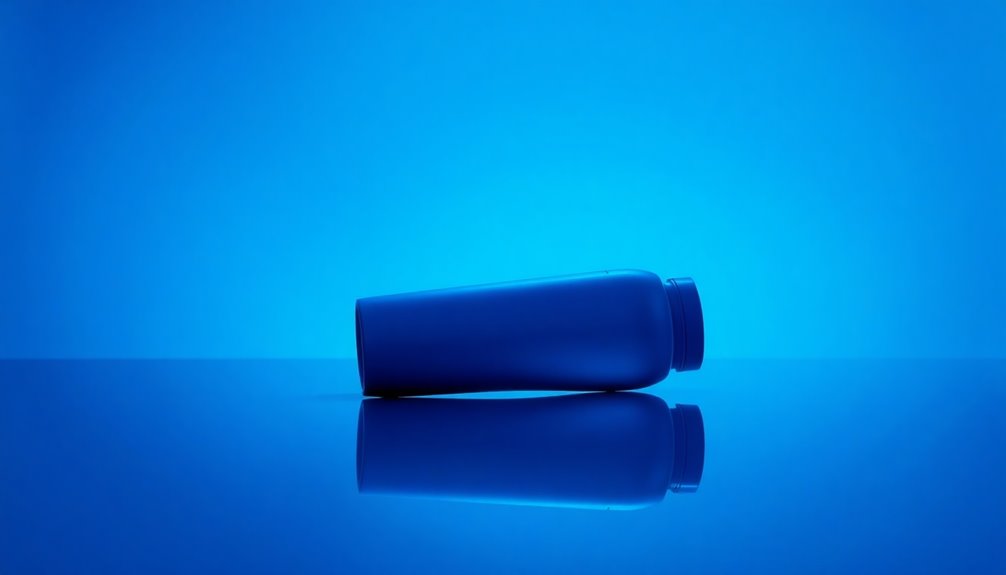
In the world of marketing and branding, blue stands out as a powerful tool that conveys trust, reliability, and professionalism. When you see blue, it often makes you feel calm and secure, which is why many companies choose it.
Here are three ways blue is used to connect with customers:
- Financial Institutions: They use dark blue to show authority and stability, helping you feel safe with your money.
- Healthcare Brands: Lighter shades of blue promote tranquility and openness, making you feel cared for during tough times.
- Social Media Logos: Blue evokes feelings of trust and encourages you to engage more with your favorite platforms.
Research shows that when brands use blue, they can boost recognition by up to 80%. This color creates a positive emotional response, which leads to customer loyalty.
You're likely to return to brands that you trust and feel good about. So, when you see blue in marketing and branding, remember it's more than just a color—it's a way to connect with you!
Frequently Asked Questions
What Does the Color Blue Symbolize?
The color blue is super special! It often stands for calmness and peace, making you feel relaxed. You might notice it in places designed to help you unwind.
Blue also represents trust and loyalty, which is why many companies use it to show they're reliable.
Plus, it can symbolize stability and safety, just like police uniforms do.
What Does Blue Represent About a Person?
When you favor blue, it shows you're calm and trustworthy. You likely value deep connections with others, too!
If you like lighter blues, you might be more creative and open-minded. Those who prefer darker blues often come across as serious and professional.
Overall, your love for blue can suggest that you're stable and emotionally balanced, helping you manage stress better.
Isn't it amazing how colors can reveal so much about us?
What Does Blue Represent in Feelings?
Did you know that people often feel calmer when they see the color blue? It's true! Blue represents feelings of peace and relaxation. When you're surrounded by lighter shades, you might feel more at ease.
However, darker blues can make you think of seriousness and stability. Sometimes, blue can even bring about a sense of sadness, like when you say you're "feeling blue."
What Does a Blue Light Mean Spiritually?
A blue light holds special meaning spiritually!
It's often linked to protection and peace. When you see blue light, it can remind you to express yourself honestly and clearly. This color is tied to your throat chakra, helping you communicate better.
Plus, blue light may enhance your meditation, bringing calmness and healing. It encourages you to trust your intuition and connect with your inner wisdom, making your spiritual journey even more exciting!
Conclusion
In the end, blue is more than just a pretty color. It's a symbol of calm, hope, and trust, like a clear sky on a sunny day! Whether it's in nature, art, or even your favorite products, blue can brighten your mood and spark joy. So, next time you see blue, remember the powerful feelings it can bring. Immerse yourself in its beauty, and let it inspire you, just like the ocean inspires sailors on their adventures!


